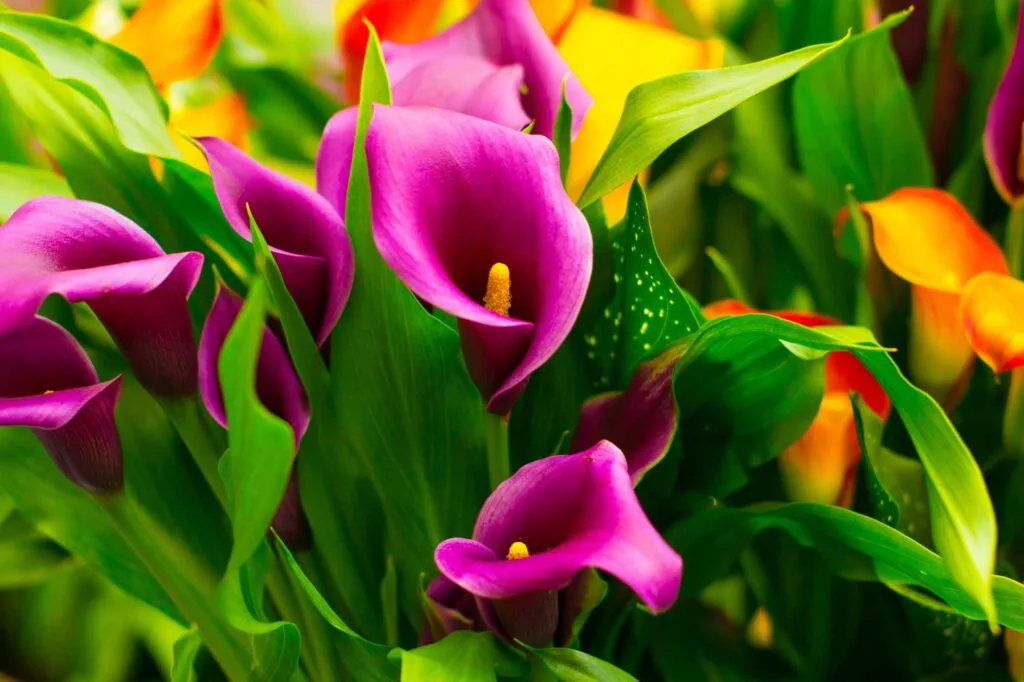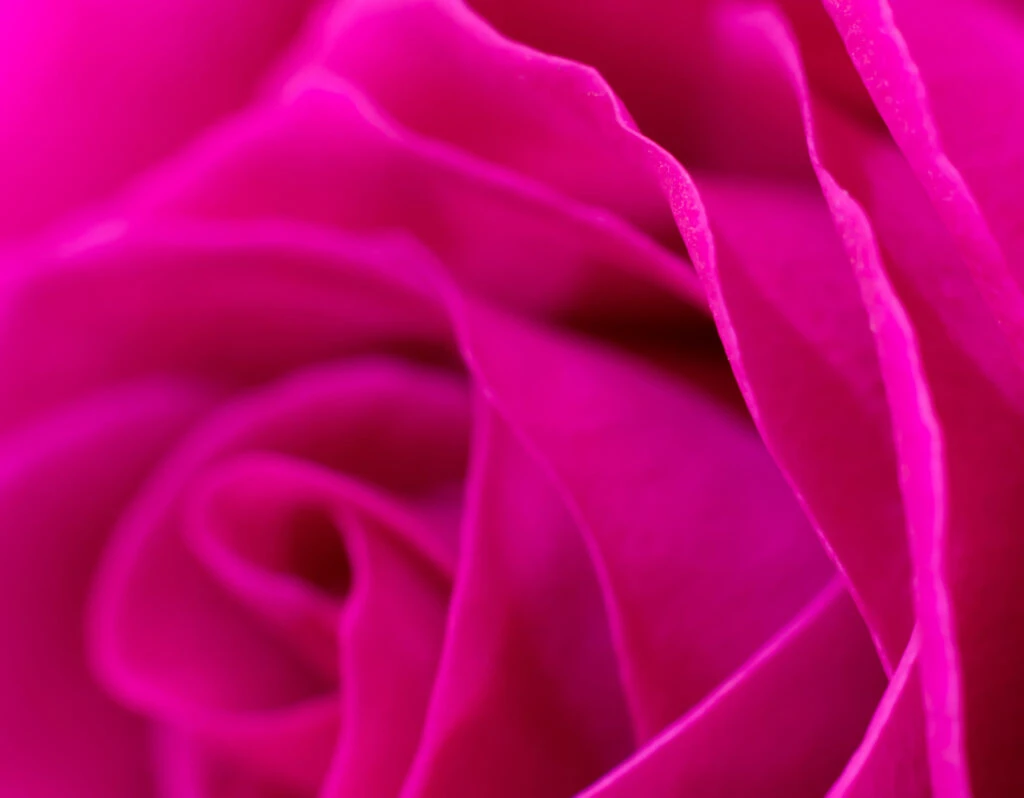Magenta is the color of understanding, femininity, and intensity
Today’s post is about the symbolism and the meaning of the color magenta as part of the Color Meaning Series.
For more colors, check out our guide on color meanings.

Where can we find the meaning of the color magenta?
Is it in tropical flowers around the world or in the wildlife that boosts this captivating color? Maybe the meaning of magenta is in the feminine outfits we see on fashion shows or in the logos of creative and forward-thinking companies.
Regardless of its meaning, one of the most fascinating characteristics of magenta is the controversy over its actual existence.
According to color science, the human brain perceives different wavelengths of light as different colors. But because magenta doesn’t have its own wavelength on the visible spectrum of light, some argue that magenta is made up. This rich color is a mixture of violet and red.
Today, we’ll talk about the symbolism and meaning of magenta and its physical effects. We will also present some shades of it as well as a couple of facts–all about the mystical magenta.
Magenta Color Symbolism in Different Cultures
- The color magenta was developed during the revolution of the industrial chemical industry in the mid-nineteenth century. Today, it continues to have an important and prominent place in the world of design. It’s a popular and striking color, often used in color printing, web design, painting, fashion, and interior design.
- Originally called “fuchsine,” magenta was renamed to celebrate the Italian-French War, which was won during the Battle of Magenta due to its location near a small town called Magenta in Lombardy, Italy.
- In the United States, magenta is associated with unconventional thinking, uniqueness, and memorability. A shade of magenta is incorporated into the logos of businesses like Adobe (in their InDesign program logo) and Taco Bell, both companies that encourage creative thinking.
- In the 1980s, magenta was often called “electric magenta” when it was used for computer displays.
- In the field of metaphysics and spirituality, magenta is often associated with psychic abilities and a link to other worlds. Many believe that magenta can boost a person’s connection to their spiritual side and underlying psychic capabilities.
Psychological Meaning of Magenta
A bold color that, for centuries, has captivated many, magenta is a mixture of violet and red.

Magenta Color Meaning
According to color psychology, here’s some insight into the meaning of magenta.
Warmth
Magenta is a color of vibrant warmth, similar to red. It inspires feelings of kindness, generosity, understanding, and love.
However, it has a more rational feeling than the color pink and is less aggressive than red.
This allows it to create a bridge between the two colors, showcasing their strengths with fewer downsides.
Passion and Power
Full of intensity, magenta spurs to action thanks to its red undertones.
Magenta is a fantastic color to have around in an office or creative space. It inspires a go-getter attitude without feeling too masculine.
Bright Femininity and Romance
It should come as no surprise that magenta is associated with femininity and romance since it’s found so frequently in florals. (Unsurprisingly, the complementary color of magenta is green.)
Magenta inspires people to embrace their free-spirited, romantic side. However, it’s more unique than pink or blush and comes off as more rational and forceful than either.

Emotional Balance
Magenta combines the power, passion, and energy of red and the reflective, quiet energy of violet. This results in intense feelings of emotional clarity.
Meditate with the color magenta in mind, and you’ll find yourself pushed toward compassion, kindness, and cooperation.
It also enhances intuition, helping you tap into your own inner wisdom rather than relying on the voices of others. This can make it a valuable guide for decision-making.
Spirituality and Mysticism
Whether you’re seeking enlightenment or just want to feel more at one with the universe, magenta is a powerful ally to have at your side when getting in touch with a higher power.
Picture a vibrant piece of purple agate. Do you feel spurred to spiritual growth and change? If so, you’re not alone.
Take caution, however. Magenta isn’t always an easy color to have around. The change it inspires may not always be easy. But it will always be worth it.
Uplifting and Supportive
Imagine meeting someone for the first time, and they’re wearing magenta. Do you feel welcome around them? Most likely.
Magenta is an inviting, accepting, and effusive color, drawing others to it and embracing them for who and what they are.
In addition, magenta is the color of cheerfulness and appreciation. It instills feelings of universal harmony.

Easily Agitated
While magenta mainly instills people with positive emotions, it can also be volatile and quick to anger.
It’s highly motivating, but the type of energy magenta provides isn’t always great with troubleshooting or dealing with challenges. This can trigger stress at times, and the color may come across as arrogant.
Physical Effects of Magenta
- Magenta is an extra-spectral color, meaning it isn’t found in the visible light spectrum. Physiologically and psychologically, it’s perceived as a blend of red and violet/blue light, with the absence of green. This may contribute to its status as an unconventional, enthusiastic, and out-of-the-box symbol.
- As a very intense color, magenta can inspire intense emotions. While this is often a good thing, large amounts of magenta can feel overstimulating and lead to feelings of impatience, irritation, and even anger. Because of this, people who are prone to anxiety or overstimulation should avoid magenta.
- Wherever it’s used, magenta instantly draws the eye. If you’re incorporating magenta into your life, be conscious of where you use it because it will quickly become the focal point.
Shades of Magenta
Magenta: #FF00FF
Hot Magenta: #FF1DCE
Magenta Crayola: #F653A6
Magenta Pantone: #D0417E
Magenta Dye: #CA1F7B
Magenta Process: #FF0090
Telemagenta: #CF3476
Sky Magenta: #CF71AF
Magenta Haze: #9F4576
Quinacridone Magenta: #8E3A59
Dark Magenta: #8B008B
Facts About Magenta
- Magenta is a primary color, along with cyan and yellow in the CMYK color model, used in color printing. Together they produce a full range of colors. However, it is a secondary color in the RGB color wheel used in digital displays.
- Magenta and fuchsia are different names for the same color in RGB.
- This unconventional shade plays a central role in Craig Laurance Gidney’s novel A Spectral Hue.
- Brown dwarfs, substellar objects that are more massive than a planet but less massive than a star, are magenta because of the absorption by sodium and potassium atoms.
Magenta means: harmony, intensity, and femininity
Effects of magenta: uplifts, overstimulates, and tenses
Positive traits: balanced, kind, and passionate
Negative traits: volatile, stressed, and arrogant
